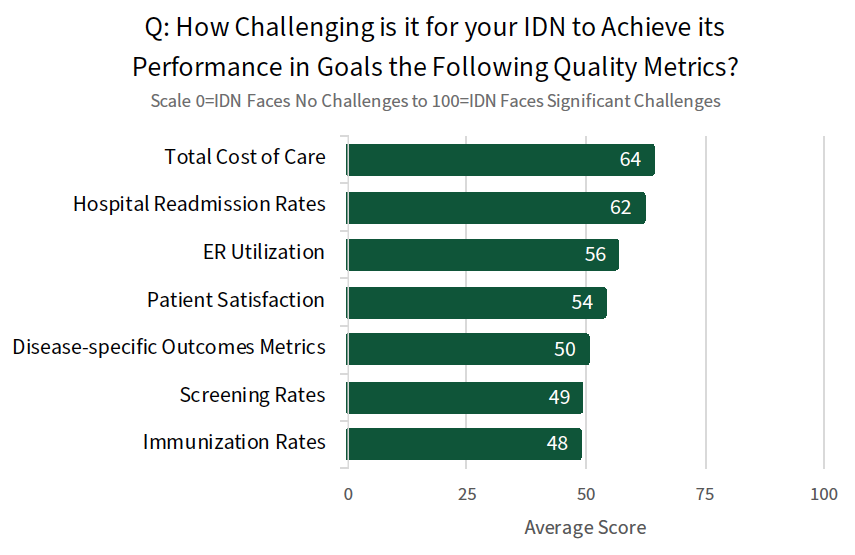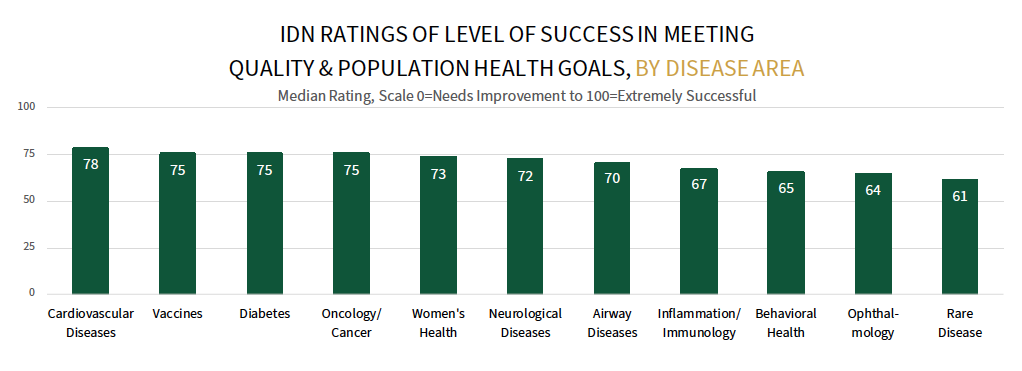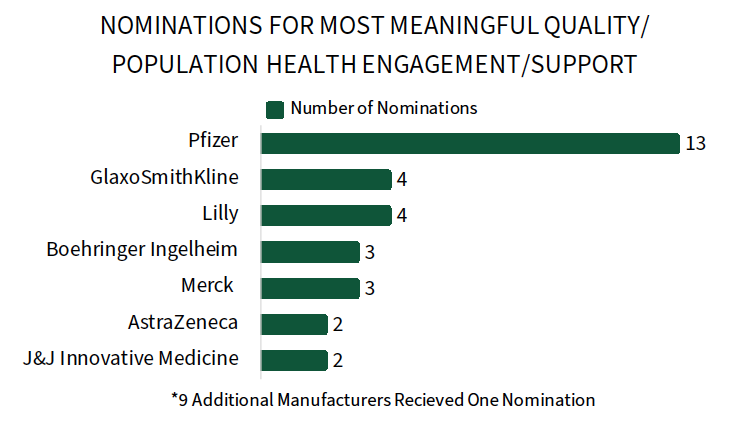Integrated Delivery Networks: Quality and Population Health Management Goals and Initiatives
Highlights of the report:
Download a PDF of these Highlights
There are many opportunities for manufacturers to align resources and offerings to the quality and population health objectives of Integrated Delivery Network (IDN) customers. HIRC's report, Integrated Delivery Networks: Quality and Population Health Management Goals and Initiatives, reviews the benchmark systems IDNs utilize to measure quality, IDNs' disease-specific priorities and challenges, and IDNs' population health management capabilities. The report addresses the following questions:
- Which quality benchmark systems are most often utilized by IDNs, and what specific measures are driving their quality and population health goals and initiatives?
- Which measurement systems and specific metrics continue to be most challenging for IDNs to improve upon?
- What are IDNs' quality goals across select priority disease states?
- Which capabilities do IDNs utilize to enhance overall population health? Which capabilities have the most opportunity for improvement?
- How are pharmaceutical manufacturers engaging IDN customers in quality improvement and population health?
Key Finding: IDNs face continued challenges with meeting their quality and population health goals; manufacturer support in the areas of patient engagement & education and medication adherence/access would be well received by IDN leadership.
Total Cost of Care and Hospital Readmissions Continue to Pose Challenges for IDNs. IDN leaders were asked to consider a list of common broad quality metrics and rate how challenging it is for their organization to achieve its desired performance. Total cost of care and reducing hospital readmissions are rated as most challenging for IDNs, with rising costs/inflation, limited coordination/transition of care capabilities, and medication adherence among some of the factors contributing to less than ideal performance. Screening and immunization rates are rated as least challenging, despite IDNs reporting greater levels of vaccine hesitancy in recent years.

The full report examines IDNs' successes and opportunities for improvement in quality and population health in detail.
IDNs Report Lower Success in Meeting Quality Objectives in Behavioral Health & Areas with Higher Drug Costs. Improving clinical outcomes is often IDNs' primary objective in most disease categories; however, this can vary. For example, screening rates/early detection is most important in oncology and reducing hospital readmissions is the top goal in cardiovascular and airway diseases. IDN respondents rate highest levels of success in meeting their quality goals for cardiovascular diseases, followed by vaccines, diabetes, and oncology/cancer.

IDNs' perceived level of success in quality improvement by therapeutic area is relatively unchanged since 2022, but in some cases is declining. IDNs struggle with quality performance in behavioral health, ophthalmology, and rare disease. The complete report delves into IDNs' disease-specific challenges in 10+ broad areas.
Pfizer Recognized by IDNs for Most Meaningful Quality and Population Health Engagement. IDNs were asked to nominate a pharmaceutical manufacturer that stands out in most meaningfully supporting their quality/population health management goals over the last 12-18 months. Pfizer, by far, receives the most nominations, followed by GlaxoSmithKline and Lilly. Manufacturers nominated are engaging IDNs in a range of educational, adherence, and preventative care initiatives.

The complete report reviews example collaborations, partnership opportunities, and priority disease states for manufacturer support.
Research Methodology and Report Availability. In July, HIRC surveyed 53 pharmacy directors, medical directors, and quality/population health personnel from IDNs ranging in size and geographic location. The full report, Integrated Delivery Networks: Quality and Population Health Management Goals and Initiatives, is part of the Organized Providers Service, and is now available to subscribers at www.hirc.com.
Download a PDF of these Highlights
Download Full Report (Subscribers only) >

